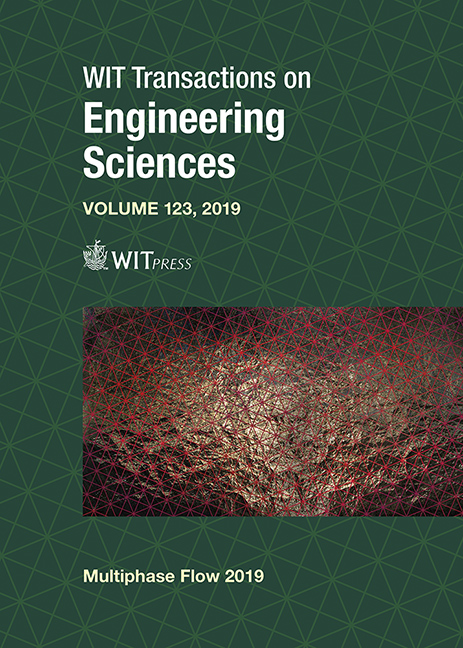INTERACTION OF A CAVITATION BUBBLE WITH AN ANTIBUBBLE
Price
Free (open access)
Transaction
Volume
123
Pages
9
Page Range
139 - 147
Published
2019
Size
1,638 kb
Paper DOI
10.2495/MPF190131
Copyright
WIT Press
Author(s)
BAI LIXIN, XU WEILIN, YAN JIUCHUN, ZENG ZHIJIE
Abstract
An antibubble is the opposite of a bubble: a thin spherical gas shell containing liquid inside and surrounded by liquid outside. Although antibubbles are rarely used in industry, they do have some potential applications, such as cleaning, lubrication, filtration and material transport. The dynamic behaviour of antibubbles and spark-induced cavitation bubbles is experimentally studied by using high- speed photography. It is found that when spark discharges occur between the electrodes and the cavitation bubble begin to expand, the antibubble splits into upper and lower parts. The upper parts with more gas produces annular liquid jet under the action of shock wave, and split into two bubbles in the next few cycles under the action of inertial force. The lower parts are composed of semi-spherical shell-like gas film. When the compression wave arrives, the gas film becomes thinner and contacts between the two sides of the gas film appear at some points. When the expansion wave arrives, the gas film becomes thicker and the contact point becomes larger to form holes. As the holes become larger and the gas film shrinks, many scattered microbubbles are formed. The secondary shock wave caused by the collapse of the cavitation bubble which occur a few milliseconds after the first shock wave (spark discharge) was observed by schlieren photography. The physical mechanism of interaction between cavitation bubble and antibubble is analysed.
Keywords
cavitation bubble, antibubble, film, shock wave, high-speed photography





